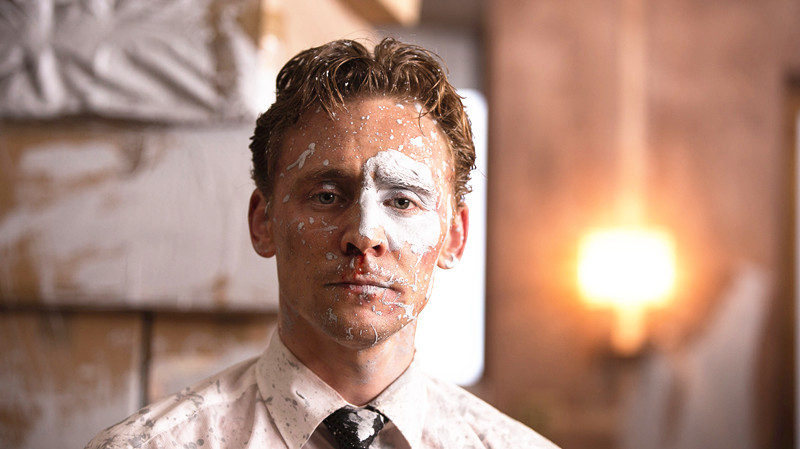
From global warming and nuclear war threatening the very nature of our planet to the rise of political tyrants and authoritarian governments threatening the welfare of its citizens, it is not hard to imagine a world that only gets worse from here. Dystopian fiction rose in popularity throughout the 20th century as the destructive capabilities of humankind continued to grow. Within the space of mere decades there were two disastrous World Wars, the rise of fascism across Europe and the harnessing of nuclear energy into weaponry, inevitably causing writers and philosophers to question where all of this will eventually lead.
Like the Dadaist artists who saw early on that the blunt logic of industrialism and aestheticism of modern capitalism leads only to irrational acts of social and political violence, writers began to incorporate the confusion and uncertainty of these times into their works of narrative fiction. Some of the most renowned and celebrated novels of all time are works of dystopian fiction, such as George Orwell’s 1984 and Aldous Huxley’s Brave New World, while it is also currently having somewhat of a renaissance with the popularity of Margaret Atwood’s The Handmaid’s Tale, which has been adapted into a multi-award-winning television series.
Despite its literary and serial success, dystopian stories have always notoriously been more difficult to adapt for the silver screen. Due to the limited timeframe of the film format, it is often difficult for filmmakers to create a thorough and convincing alternate world that is integral to the success of dystopian stories. Even when done competently, if the story is based on previous literary material, the world created by the director and designers has to not offend or alienate those who imagined the world in their heads when reading or else risk such remarks as: “Just read the book, it’s better”. No matter how much money or talent is thrown at a project, it is often hard to beat the imagination of the audiences’ own mind.
However, when the dystopian film is made effectively, it is engrossing and captivating, creating a world that immediately feels authentic and lived-in, while also heeding a clear warning of the dangerous paths that humankind can take.
1. Hell Comes to Frogtown (R.J Kizer, Donald G. Jackson, 1988)
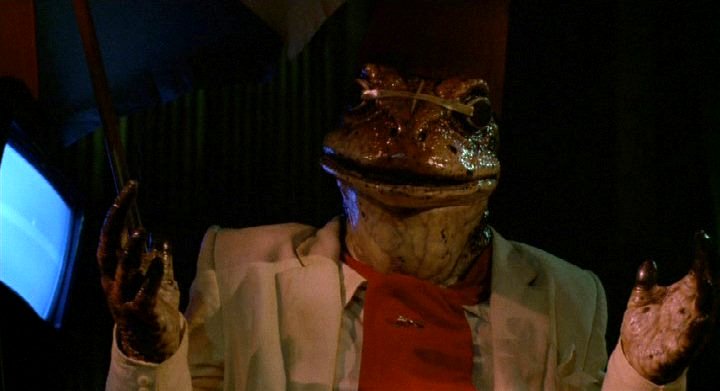
A number of the films on this list are adaptations of critically-acclaimed works of fiction or written by some of the most respected figures in cinema so it is only right that it begins with a movie that sounds like complete schlock. Hell Comes to Frogtown takes place in a post-apocalyptic Earth where man and mutant amphibian share the land. Nuclear fallout has resulted in low fertility among humans, meaning that when it is discovered that the womanising Sam Hell (Roddy Piper) has functioning sperm, he is seized by the government who take protective custody over his genitalia and plan to use him to impregnate a group of fertile women. However, after they are abducted by a community of frog-people who plan to inseminate the women with their own tiny tadpoles, Hell is sent to infiltrate the mutant town to rescue them.
Hell Comes to Frogtown may sound like it was conceptualised by a pair of stoned teenagers in a college bedroom (which it may well have been) but it is a lot of dumb fun if you are looking for a frivolous film to waste your time with. You can say what you want about Citizen Kane or Vertigo but no “classics” of cinema have had anthropomorphic frogs wearing suits and wielding chainsaws. Not even David Lynch has produced anything to that effect. Rowdy Roddy Piper, in his breakout year as an actor in which he also starred in John Carpenter’s They Live, gives an effectively comical performance as his electrically-charged codpiece won’t allow him to abandon his assignment while having the trained moves from his wrestling days to use during the action performances.
The most notable scene of the film shows Spangle, a nurse sent with Hell to recover the women, perform the “Dance of the Three Snakes” for the amphibians after she has been kidnapped herself, transforming her from a bookish, officious woman to an erotic dancer. Unfortunately for her, her dance seems to please her audience too much.
2. Dead End Drive-In (Brian Trenchard-Smith, 1986)
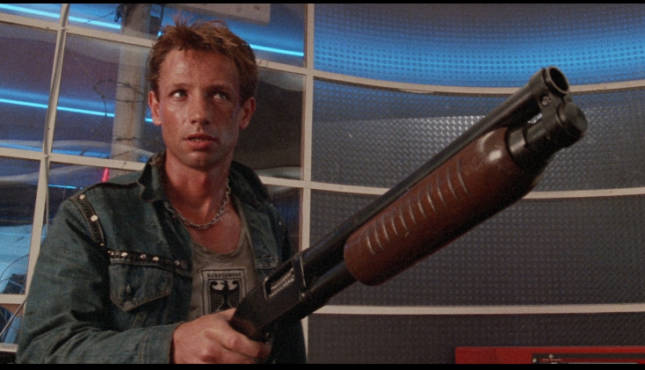
Very much coming off the success of the Mad Max films, Brian Trenchard-Smith’s Dead End Drive-In is another Australian dystopia based around the importance of motor vehicles after society has been worn away. Set in the near future that appears to be styled on a curious mix of 1950’s American consumerism and 1980’s glam-punk, drive-in theatres are used to lure and trap undesirables and the unemployed to remove them from society. Within the locked gates, the outcasts are perfectly happy to form their own shanty society where they get to party all the time and eat as much junk food as they like. However, after Crabs is locked in with his brother’s borrowed 1956 Chevy, he is compelled to escape by any means necessary.
The future depicted in Dead End Drive-In could equally be seen as heaven or hell depending on the way you want to live your life. Withdrawn from a society which they were struggling in anyway, much of the youth contained in the cinema camp revel in the lack of responsibility or long-term future that they have. In the “real” world jobs are scarce and the law is tight, so why wouldn’t they prefer to live in a place where they can make their own rules and watch movies every night?
Trenchard-Smith’s representation of this rebellious alternative town seems to be constituted of finding whatever clothes and styles he could find and mashing them together. Hair is gelled and hairsprayed in every possible direction and make-up is worn like war paint. Leopard print hats partner leather studded collars and suits are worn inside out with an army officers cap. Even the dogs get a makeover as an Alsatian is shown painted in aboriginal-like patterns from nose to tail.
Already uncomfortable in his surroundings, Crabs is incentivised even more to escape when the Drive-In begins to take a malevolent turn. After the arrival of a small Asian community, large swathes of the youths become aggressive and fearful, expressing concerns for their safety and way of life. Even Crabs’ girlfriend, Carmen, buys into the propaganda that the new arrivals will want to rape and steal from the white inhabitants.
An overtly clear, damning comment on the absurdity of racism in Australian society, Trenchard-Smith could easily be criticised for being too blatant and heavy-handed with this rather random inclusion in what was a rather light, silly film; however, what should be criticised more is that his obvious message is still relevant today as borders become increasingly restricted and the fearmongering of “other” people is perpetuated.
3. Fahrenheit 451 (Francois Truffaut, 1966)
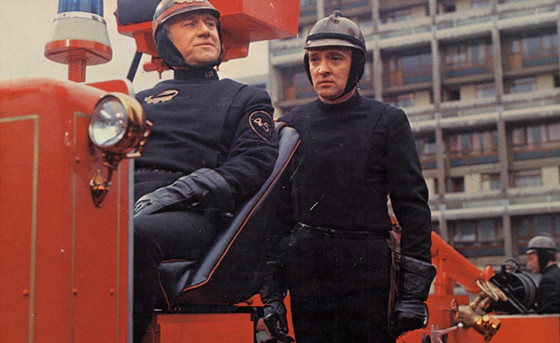
Based on one of the most famous dystopian novels of all time, Fahrenheit 451 supposes a future in which all books have been outlawed by the government to control society and keep their citizens at a tolerable level of intelligence and obedience for them. Made thirteen years after the publication of the Ray Bradbury novel, it is unsurprising that it should have been self-confessed bibliophile Francois Truffaut that adapted the story for the screen.
With obvious heavy connotations towards the Nazi German’s fascistic burning of books, the film stars Oskar Werner as Montag, a “fireman” whose job it is to find and destroy any books that may be in people’s possession. However, after an encounter with Julie Christie’s Clarisse, who also plays Montag’s wife Linda, his curiosity is aroused to keep some of these books and read them himself.
The opening credits of Fahrenheit 451 are narrated to the audience, immediately establishing that nothing will be read in this world. Breaking news is communicated to the population over a loudspeaker atop of a car and comic strips comprised solely of images are the only form of media that is close to being allowed to be read. Fahrenheit 451 is the name of the division of “firemen” who investigate the smuggling of books and promptly destroy them on sight; the name said to derive from the exact temperature that the pages of a book start to burn. The “firemen” are ruthless and thorough as they rummage through people’s houses, even at one point confiscating a tiny book out of a baby’s pocket.
In the best scene of the film, the “firemen” burn a whole library discovered in an old woman’s attic in which we see a copy of Cahiers du Cinema with Jean-Luc Goadard’s Breathless on the cover being doused in lighter fluid – no doubt a joke by Truffaut at the expense of his former friend. The reason given behind the destruction of literature by the chief of the division is that philosophy is only a matter of fashion and the only way to be happy is for everyone to be equal which means the eradication of the elitism that literacy creates- a startlingly familiar train of thought in this current age with the rise of anti-intellectualism and scepticism of experts in some areas of politics.
It is perhaps ironic that a story about the importance of books and subsequent dependence on screens and other forms of media for information was developed into a film; however, it’s message about the importance and integrity of books is maintained while also adding compelling features that are unique to film, such as the heavily Hitchcockian dream sequence.
4. The Hourglass Sanatorium (Wojciech Has, 1973)
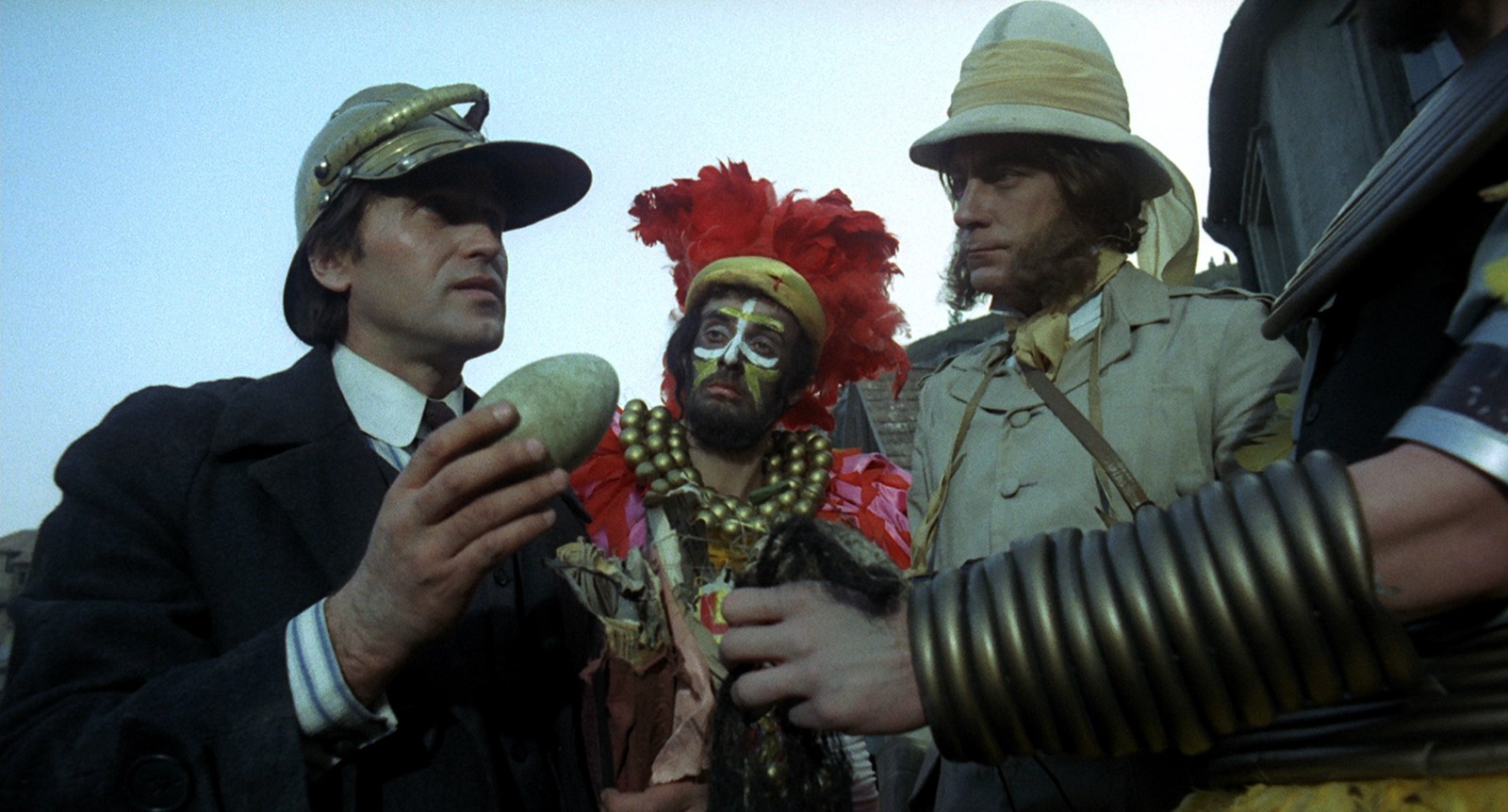
A surreal and personal dystopia, Wojciech Has’ The Hourglass Sanatorium presents a strange dreamworld where everything is uncanny and phantasmic. After travelling to visit his dying father in a distant sanatorium, Jozef discovers that the laws of time work differently at the place of his father’s ruined refuge. As he travels from room to room, Jozef encounters memories and figures of his past in a succession of oneiric episodes that take him all the way back to his childhood romances and fantasies of travelling the world. A Polish film starring a Jewish protagonist, The Hourglass Sanatorium is heavily influenced by the plight of Eastern European Jews throughout the 20th century whose realities themselves were as dark and frightening as any dystopian fiction that could be imagined.
Has introduces Jozef as he rides a dilapidated train to the sanatorium, immediately evoking connotations of the Holocaust as gaunt, pale, ragged figures ride along the protagonist to this mysterious, unknown destination. Images reminiscent of the Holocaust are frequent throughout as Jozef’s experiences are populated by destitute Jews in Ghetto-like areas.
The Hourglass Sanitorium’s narrative is non-linear and fluid as Jozef drifts from fantasy to fantasy in a perfect depiction of the seamless logic of dreams. Has creates a world of chaos and confusion; a feeling that would have been correspondent in the Post-Second World War Soviet Poland as the experiences of Eastern European Jews during these years must have been largely unfathomable and disillusioning. Open and expressive, The Hourglass Sanitorium is open to various interpretations as Jozef’s metaphysical journey can be seen as his own farewell voyage from life to death while also depicting his search in life for love and purpose.
Difficult to deconstruct in such few words, The Hourglass Sanitorium must really be experienced to be understood. Even if you feel like you haven’t comprehended any of it at all, it will ruminate in your subconscious like the weird fever dream that it is.
5. The Quiet Earth (Geoff Murphy, 1985)
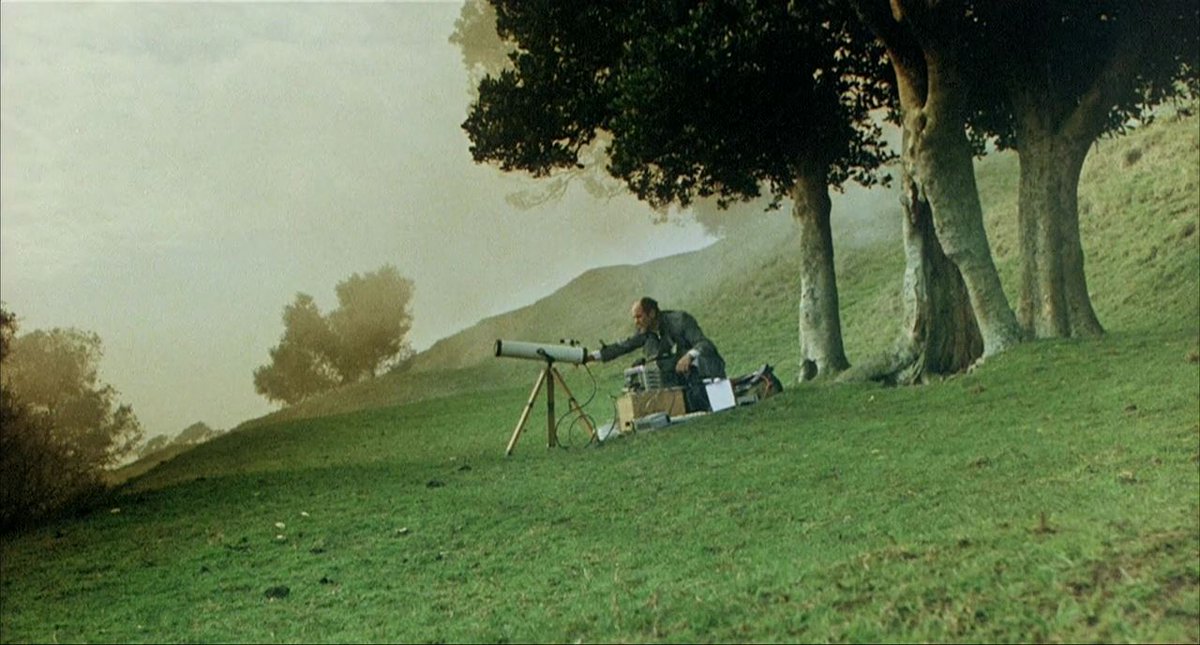
The Quiet Earth is based on a premise that has been imagined a million times but never fails to intrigue: what if one day you woke up and were the only person left on the planet? Featuring a cast of only five actors, The Quiet Earth stars Bruno Lawrence as Zac, a scientist who believes that he is the only person left alive and is convinced that the experiments of his company might have had something to do with it. Wracked by guilt and loneliness, Zac slides into depression after exhausting all of the possible entertainment that could be had if left completely alone in the world. After finding two fellow survivors, Joanne and Api, Zac begins to try to decipher what has actually happened and what can be done about it.
Zac starts his life on the empty planet as you would imagine many people would – he moves into the biggest mansion that he can find, drinks the most expensive champagne and indulges in all of the highest luxuries that only the select few can usually afford. However, as expected, the gratification of this can only last so long. In the most interesting scene of the film, Zac gathers cardboard cut-outs of various famous figures, from Richard Nixon and Adolf Hitler to Alfred Hitchcock and Marilyn Monroe, to deliver a speech in which he declares himself the President of the Earth and God. More out of self-pity than triumph, he states that he has been condemned to live in this lonely world that he potentially played a role in creating. Zac’s distress somewhat subsides after he meets Joanne and Api and together they deduce what it is that meant they survived – that is, whether they survived at all.
The Quiet Earth offers no concrete answers to what caused the trio to be stranded alone or whether it is possible that the rest of mankind will ever return, encapsulated by the films enigmatic ending in which Zac predicts that “the Effect” is due to happen again and decides that he has to take action. Left standing on a beach where clouds reach down to touch the water and planets fill the sky, we are left to decide whether it was Earth at all that Zac and his friends were living in or a form of purgatory before the transference to a heavenly world.